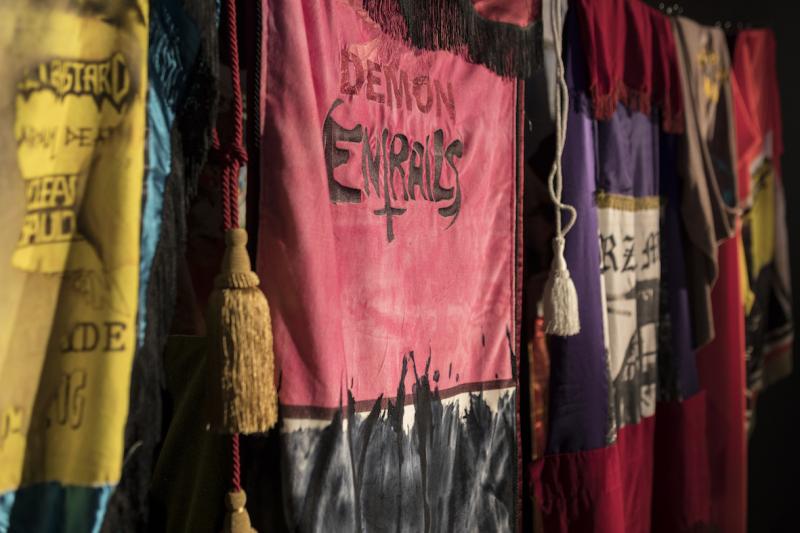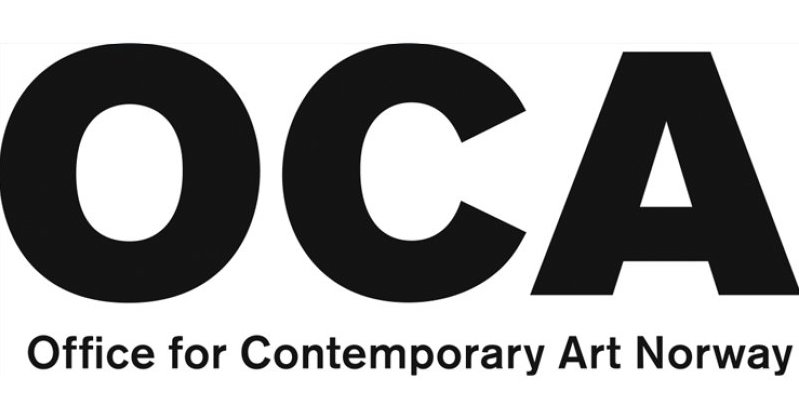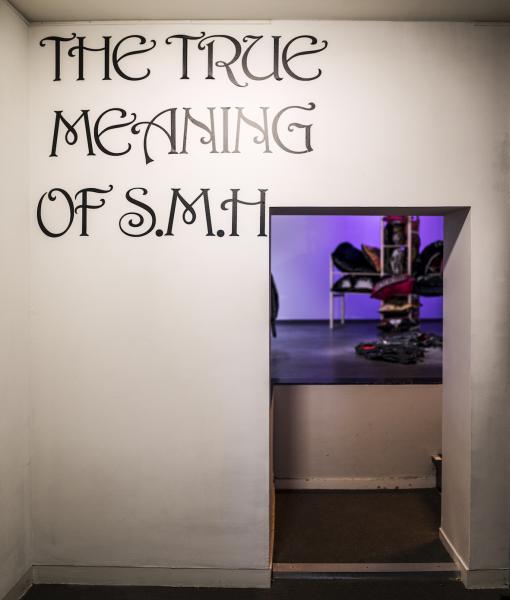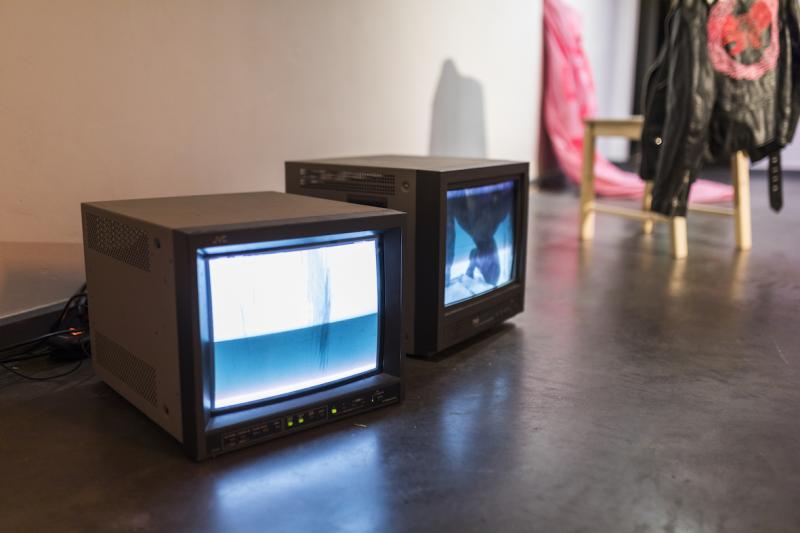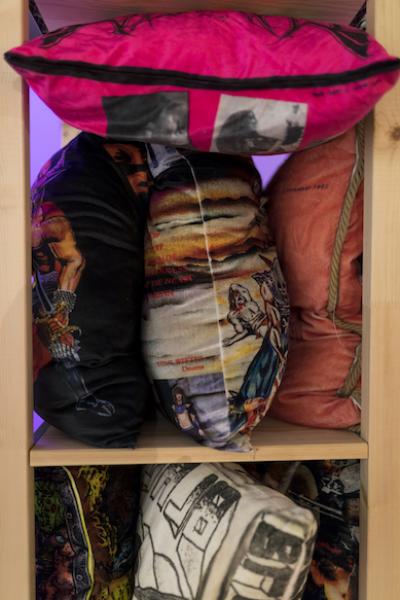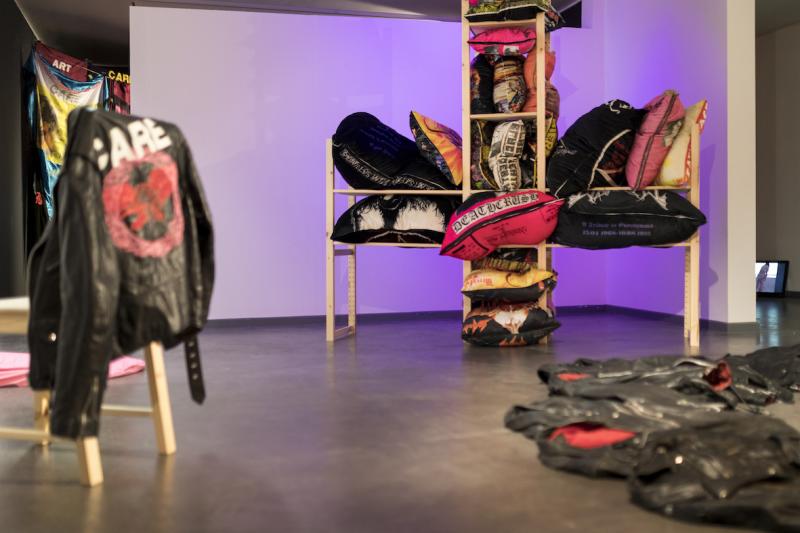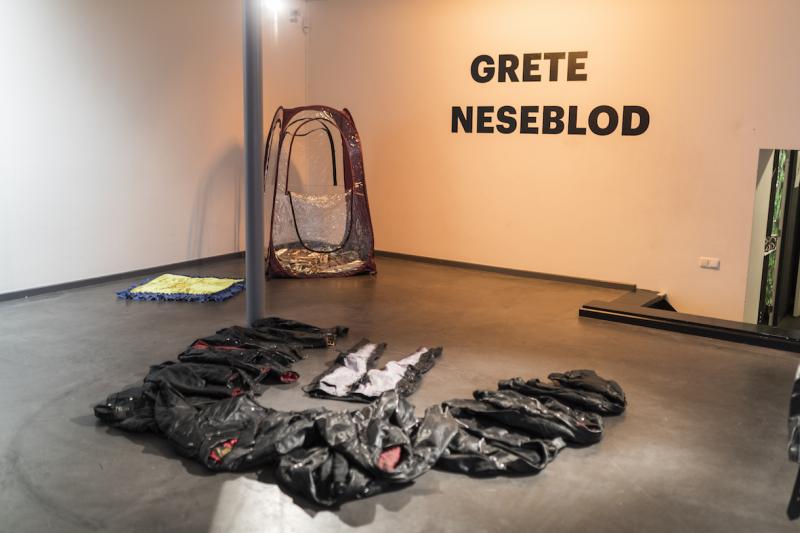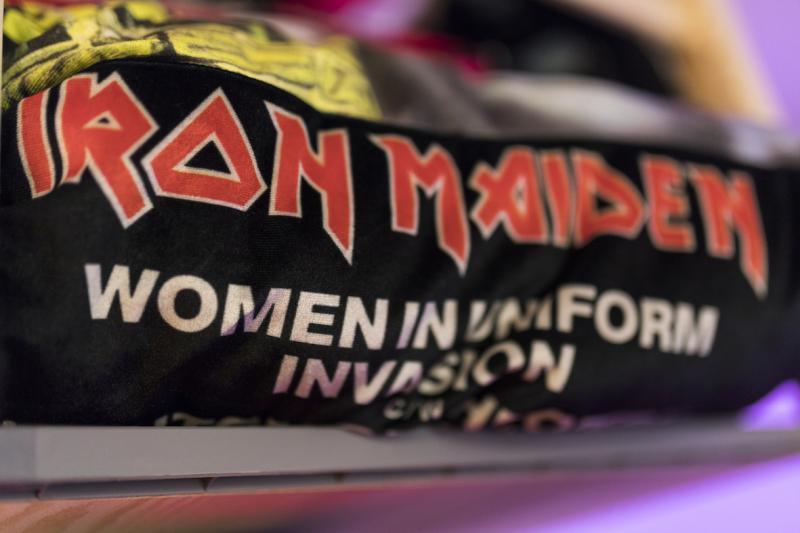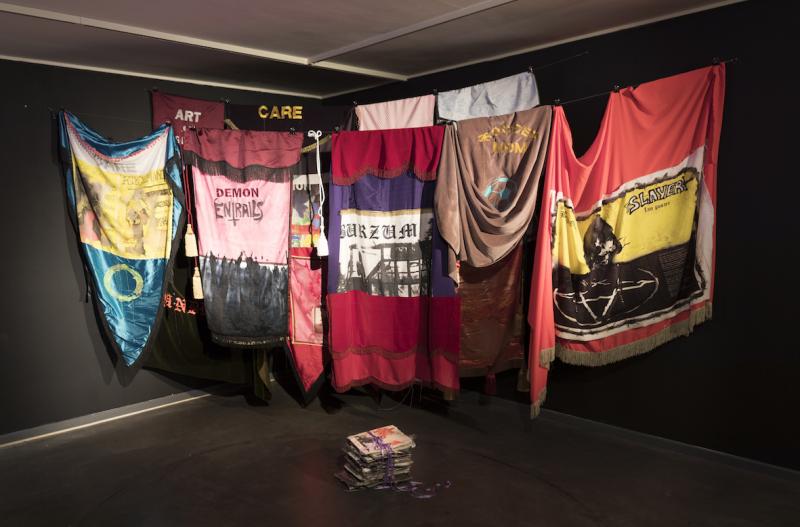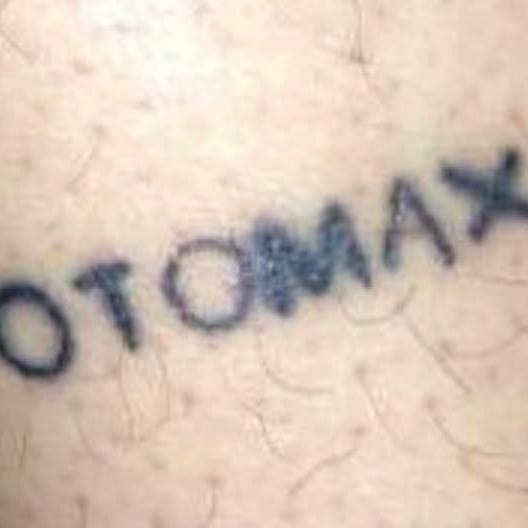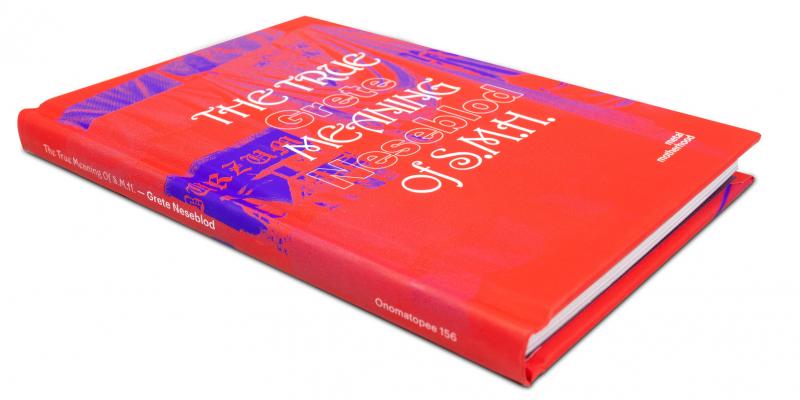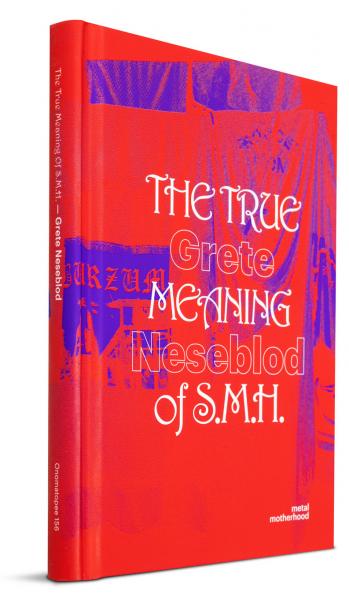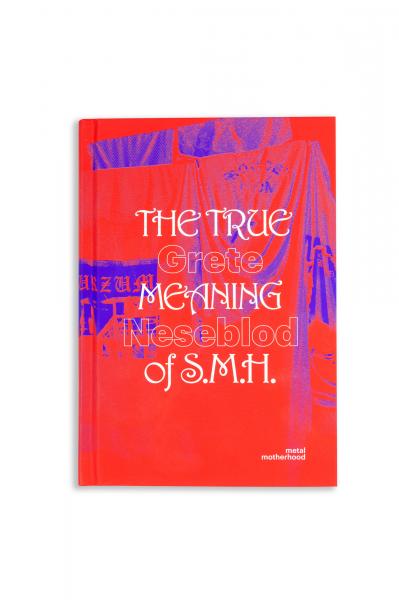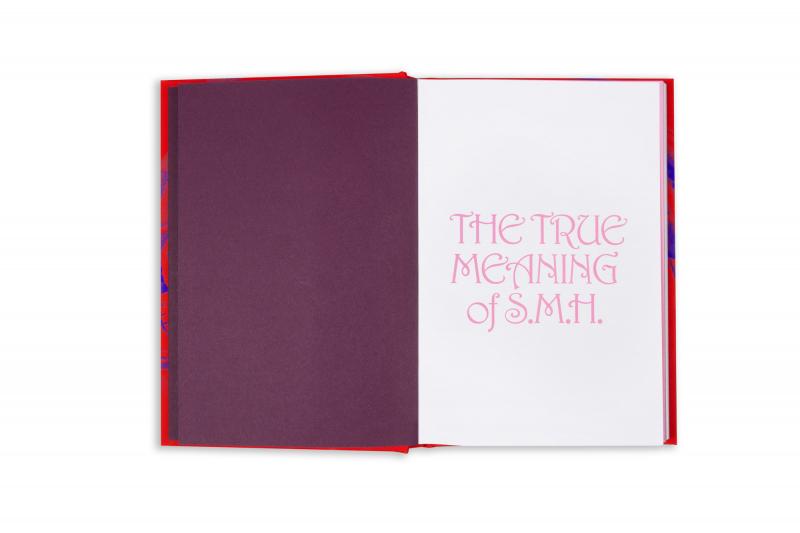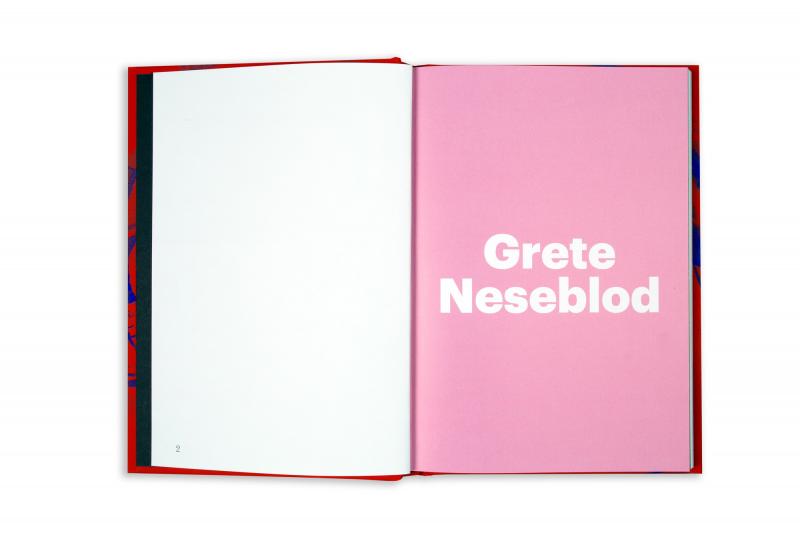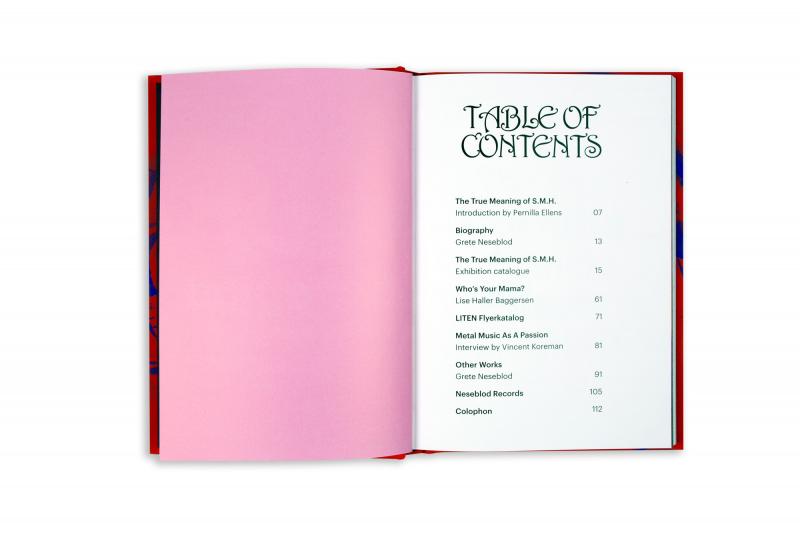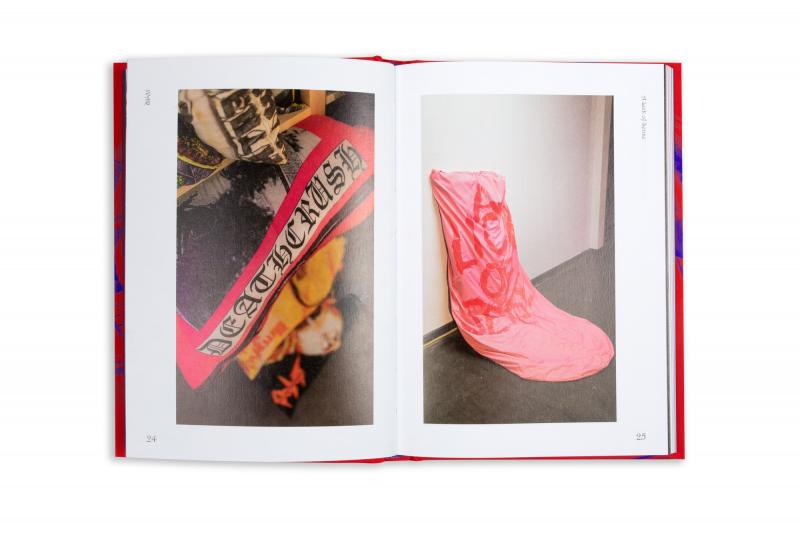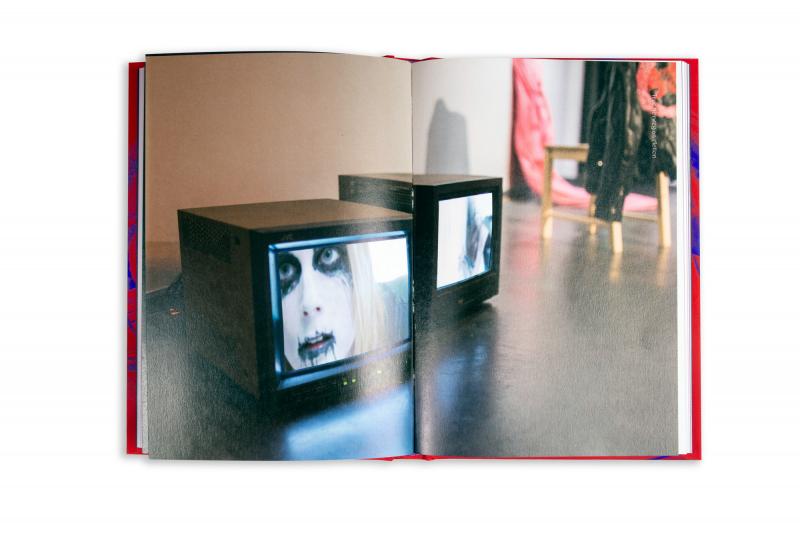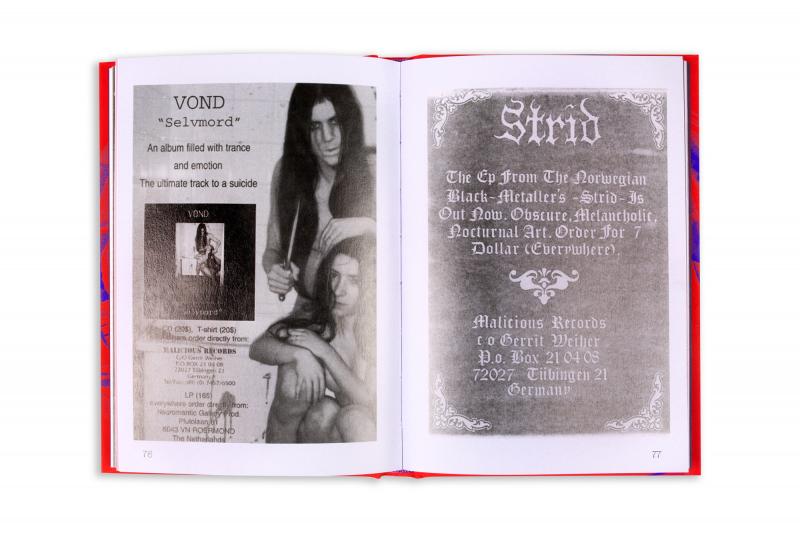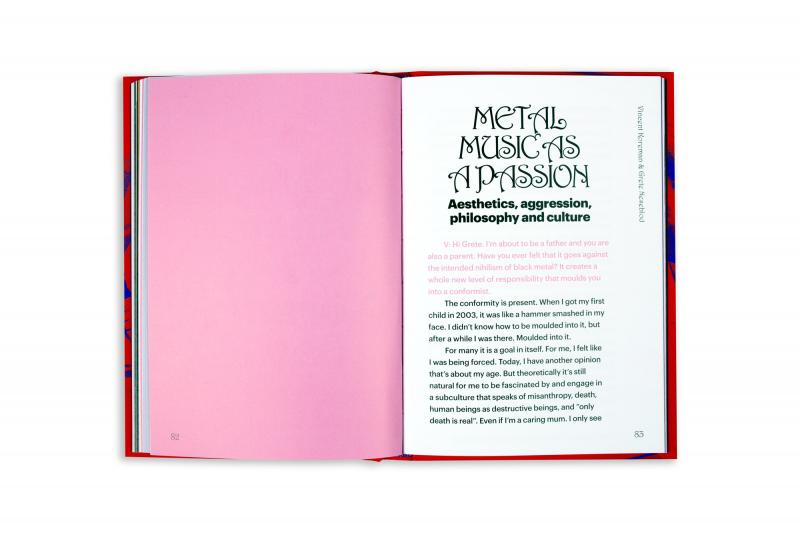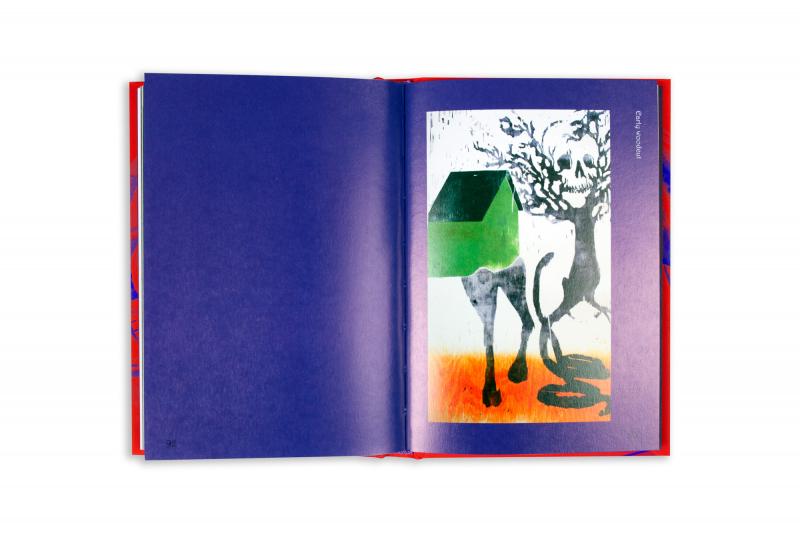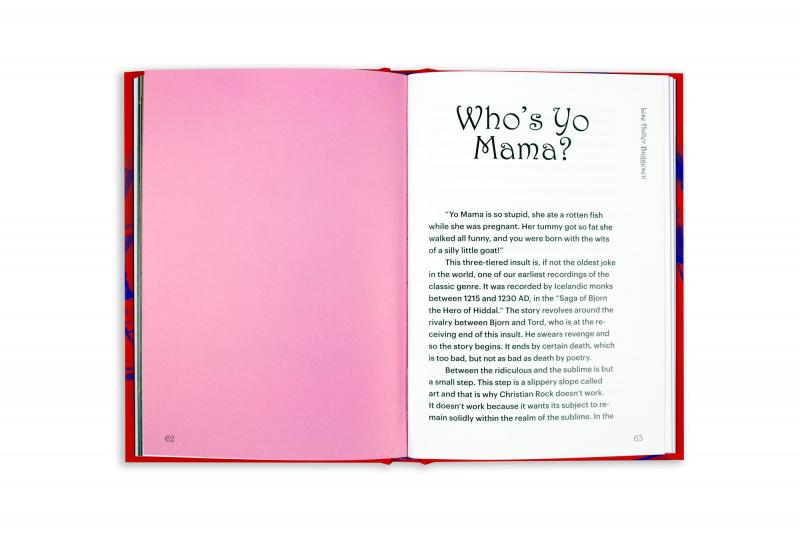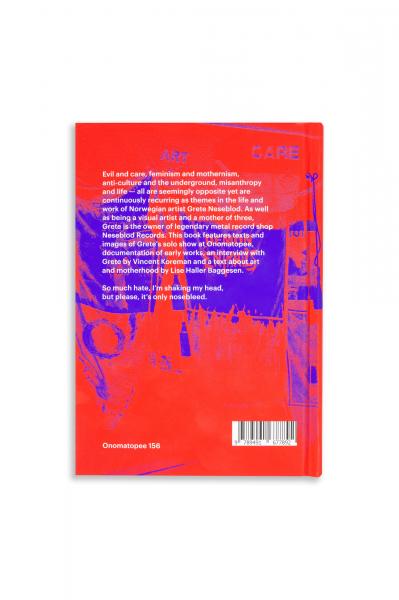S.M.H. =
So Much Hate
Or
Shaking My Head
Dualism is an omnipresent theme in the life and work of Norwegian artist Grete Johanne Neseblod (1980, Trondheim, Norway), embodied by the contrasts between good and evil, art and music, and being a mother and an independent artist. Evil and care, feminism and mothernism, anti-culture and the underground, misanthropy and life – all are seemingly opposite while continuously recurring as themes. As well as being a visual artist and a record shop owner, Grete is also the mother of three children. “There are obvious contrasts between being a mother of three children, an artist and running Neseblod Records. I recognise and understand these three cultures from both the inside and the outside, and I work to deconstruct the different roles”, says Neseblod.
Black metal subculture plays an important role in the work and life of Grete. She looks to up to it, while playfully critiquing it at the same time. To her, black metal is a world spanning from the 1980s to present-day, covering the large spectrum of craziness and cool, the dark and the philosophical, while occasionally entailing brown political views as well as sexism. It’s a world full of dualities, of light and dark, of admiration and fandom, that can occasionally be at odds with personal beliefs. Neseblod Records, the record store that Grete owns together with her husband Mr. Neseblod, is both a shop and a cultural hub located in the Old Town of Oslo, Norway, and pivotal to the punk – noise – and metal world. Grete observes this world as an outsider. Living and working within the walls of Neseblod Records, Grete is surrounded by the evil/blood/death/sexism aesthetics that are characteristic for metal culture. As a feminist, a mother, a record shop owner and a visual artist she holds various standpoints. All these roles and influences of various living and working areas are intertwined, and become visible in the outcome of her autonomous practice.
It’s not only underground music culture that features in Grete’s work. To the same degree feminist themes are part of her practice. She comments on being a mother and motherhood culture in works such as the video Forced to quit painting and the installation Soccermom. The spatial work IVAR shows pillows with iconic black metal designs, arranged in a structure that is built to refer to the anti-christ subculture while IKEA’s standardised furniture design. Cushions aim to resemble a soft female body; a pillow for children. In a unique way, Grete carefully comments on prejudice and stereotypes, and dismantles myths and beliefs in underground music culture, in motherhood as in the art world. This exhibition at Onomatopee features several works of Grete Neseblod, and a combination of installation art, video works, prints and textile art, while also providing a glimpse into the atmosphere at Neseblod Records.

